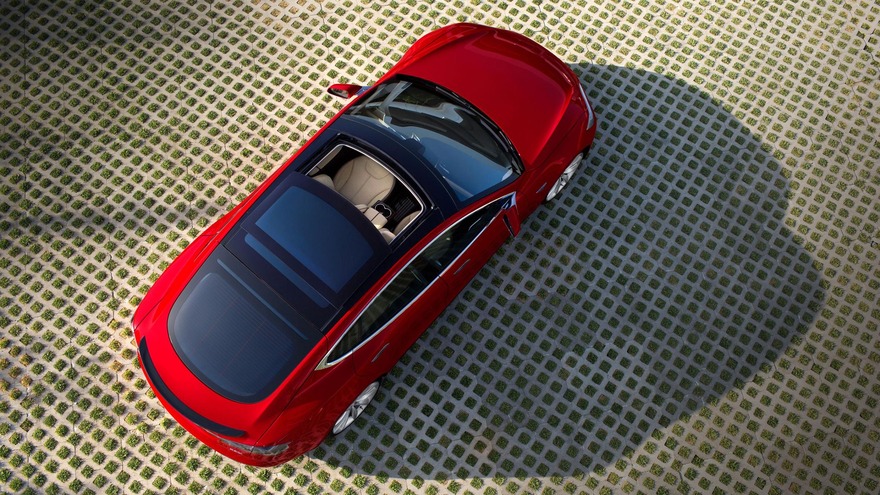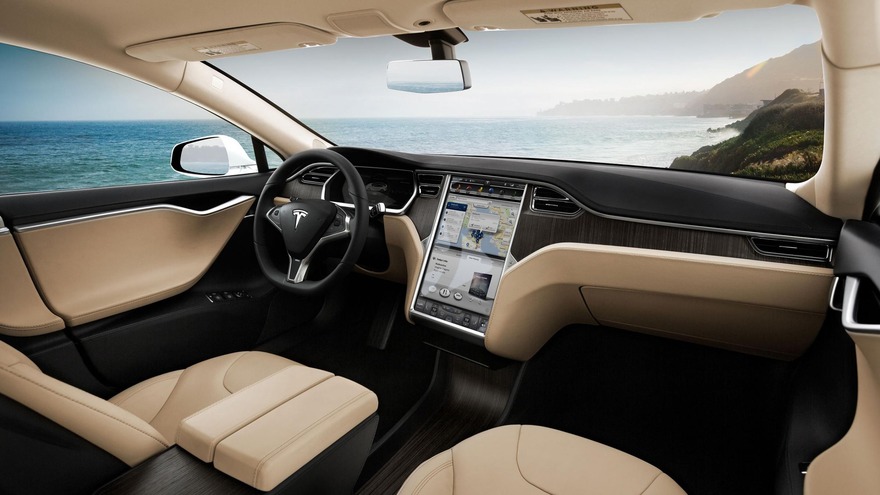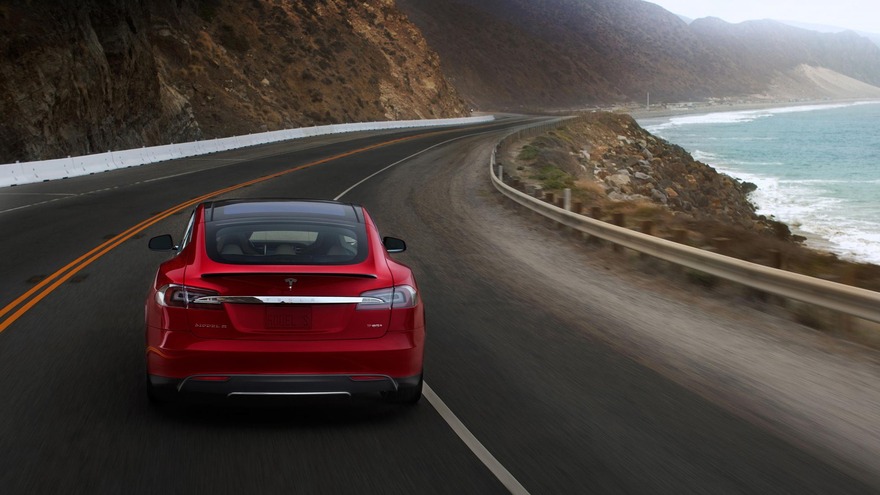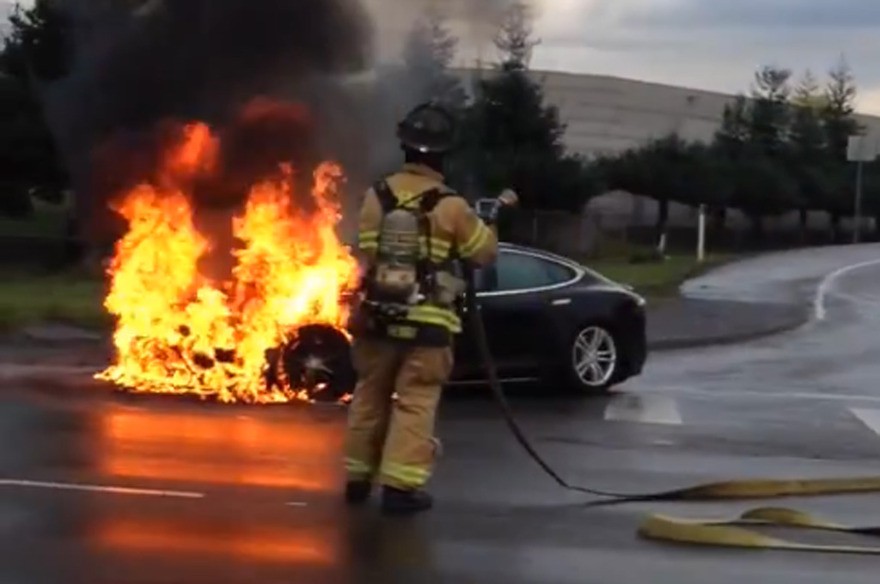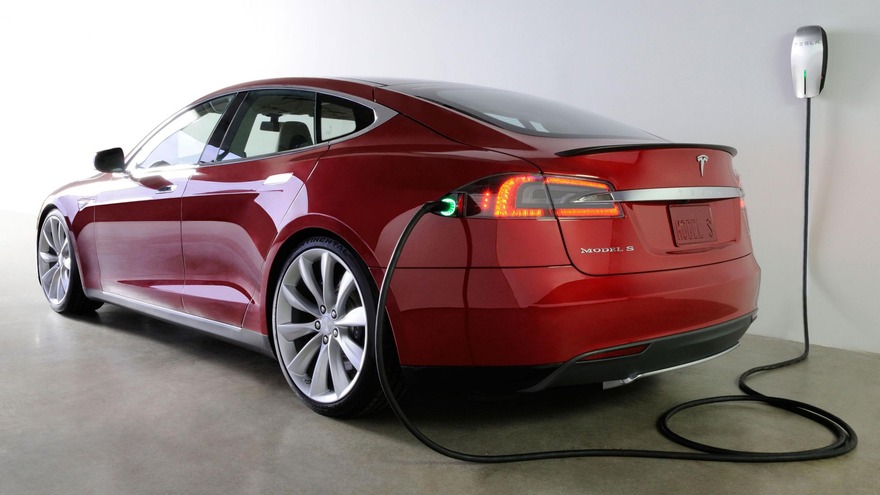Elon Musk, the founder of PayPal system, Sergey Brin and Larry Page, the founders of Google corporation, have once met and decided to try their hands in car manufacturing. This is how Tesla Motors company was created — one of the youngest car makers rapidly moving into high gear.
The product line of the manufacturing company already consists of several models with rather straightforward names: Tesla Roadster, WhiteStar project — Tesla Model S (sedan), BlueStar project — Tesla Model X (x-cross) crossover and in the end of October 2013 the news was spread that Tesla Model E (entry) is to debut in 2015. Production of Model E (which is basically a budget version of Model S with the price not higher than $30,000) will be monitored by a famous engineer Doug Field, who used to work at Segway and Apple. The car is most likely to be designed by Chris Porritt, a former Aston Martin employee, the one who took part in creating One-77 model. The new car is planned to be either a hatchback or a compact crossover like BMW X1 but there is no specific information on that yet.
We would like to examine Model S in detail, a car which used to be a record-holder among serial electric cars until quite recently.
In the beginning of 2013 during drag racing competitions held at Palm Beach International Raceway in the USA (Florida), in its duel with Dodge Viper SRT10, Tesla Model S Performance set a new record among serial electric cars. The car was able to cover 402-metre distance in 12.371 sec; reaching 60 mph (96 km/h) in 3.9 sec. Acceleration dynamics claimed by the manufacturer was 4.4 seconds. Top speed of the electric car was 178.3 km/h.
The record was fixed by the National Electric Drag-Racing Association which called Tesla Model S the fastest serial electric car in the world. Before that Tesla Model S managed to demonstrate better performance than Porsche 911, BMW 3 Series, Cadillac ATS, Toyota Avalon, Subaru BRZ and other cars.
The modern Tesla Model S design hides an aluminium body, revolutionary transmission, great steering, record-setting efficiency and a really comfortable and spacious interior.
Somewhat futuristic interior looks luxurious and laconic — there are no handles there, the doors are operated with the help of built-in sensors. No ignition switch either — the car starts automatically when the driver gets in. Spacious interior is not just an advertising trick. There are 5 seats there — two for adults and two more additional seats for children. An absolutely smooth floor looks very nice, there are no extra pockets or glove compartments as the designers thought these elements would take the gloss off. Leather and wood were used for interior upholstery. Though the compartment for luggage is rather spacious, there is also additional place for it under the bonnet. There are no frames around the side windows.
17-inch touchscreen display is located in the centre of the dashboard. It has Internet access, allows web browsing and listening to online radio. All-glass panoramic roof is operated by on-screen finger gestures.
But what does Model S have inside? It is equipped with an 85 kWh lithium-ion battery. 16 blocks of this battery, which is the major power supplier of the car, comprise almost 7,000 Panasonic battery cells (method of distribution of positive and negative contacts is kept in secret).
Tesla Model S 2013 is equipped with a powerful high-performance electric motor (416 hp) which allows accelerating the car from 0 to 100 km/h in 4.3 seconds. Maximum torque of 443 Nm provides an instant silent start — you can even hear the clock ticking when you are inside the car. There is no clutch here, no transmission we are used to. It has a rear-wheel drive but there are two additional electric motors in front of the car in case the road is slippery. It has direct gear, the acceleration is very fast and smooth. As soon as you step off the acceleration pedal, the car starts slowing down. Energy recovery takes place when braking — the car starts recharging and 90% of its charge goes back to the batteries.
Together with a powerful engine and fast acceleration up to 100 km/h, new electric power steering and suspension, 2041-kg curb weight Model S has great sports potential. The centre of gravity is below the wheel spindle like in a Formula 1 race car providing Model S with great road traction.
The American supercar is economy and eco-friendly due to its battery which allows covering 480 km distance when fully charged — those are record-holding characteristics for an electric car. It can be charged with the help of either 120V or 220V cords. It takes only half an hour to fully charge the car with one of them.
The National Highway Traffic Safety Administration (USA) conducted crash-tests of the premium electric car Tesla Model S. It was exposed to frontal crash at 56 km/h, a few side impact crashes and rollover tests. According to their results, the car received top rating in safety.
But the autumn of 2013 was marked with a few failures for Tesla Model S: the cars caught fire three times within one month in road accidents. None of the drivers were hurt. Though the construction of the car is very secure, it still has an ‘Achilles' heel’ in the battery compartment. But the Tesla company assumes that in case of similar accidents with petrol-powered vehicles the consequences would have been much more serious.
Tesla electric car is rather expensive: the price for a standard model in the USA starts at $49,900 and reaches $58,570 and $68,900 for a model with more powerful batteries. Performance version of the car would cost $78,750.
Starting from the summer of 2013 Tesla Model S is also sold in Europe. The first American electric car on the European market went to Norway, a country which created all the necessary conditions for driving an electric car with comfort. The price for the European version of Model S starts from €51,500.
It turns out that even the most reasonably-priced variant of Tesla car would be twice as expensive as a similar Nissan car, for instance, although the latter can cover a three times shorter distance when fully charged.
Interesting facts!
Historic moment
Though the Norwegian car market is not that big but this moment has already been noted as historic: in September 2013 Tesla Model S became the best seller among electric cars in Norway — more than 600 cars were sold and that makes 5.1% from the total amount of car sales in this country. Quite recently Tesla Motors company has built Supercharger stations in six Norwegian cities making it free for the owners of Tesla electric cars to charge their vehicles.
Right now there are about 15,000 of electric cars in Norway and this number is estimated to grow up to 50,000 by 2018. The country’s government encourages development of electric means of transportation in every possible way: the owners of electric cars are exempt from transport tax, value added and registration taxes. In Oslo the drivers of electric cars can have free parking and use lanes for public transport. It might be the reason why the number of electric cars per capita is the largest in the world here. Or maybe it’s because Norway is among the countries with the highest petrol prices?
Get ready for charging!
Tesla Motors is working hard on developing a network of free charging stations for its clients. At the D11 — AllThingsD conference held in May Elon Musk stated the number of fast charging stations in the USA — Superchargers — would triple by summer and by the end of the year there would be no boundaries for using this car on 70% of US territory. By 2015 they are planning to provide the whole country and part of Canada with the necessary amount of fast charging stations.
The charging process at Supercharger lasts for about half an hour and the power received during this time is enough for Model S to travel 250–300 km. According to different data, the price of full charge does not exceed $11 and would be enough for the distance of 450 km making it three times cheaper than filling a regular car with petrol.
You can recharge Model S by an automatic battery replacement: the procedure takes about 1.5 min — twice as fast as filling a full tank of a similar petrol car. It would cost around $60–80 which is almost the price of a full tank of petrol.
As stated by company’s president Elon Musk, the “slow” (20–30 min) battery charging of Model S at the company’s charging stations would remain free.
But what about Russia?
Two Russians have already acquired American electric cars. YouTube features a video made by Siberian journalists about a Tesla Model S test-drive performed with the help of the first owner of such car — Konstantin Gorokhov from Barnaul.
A review posted in LiveJournal by the second owner of Tesla Model S car — Karginov Andrey Vitalyevich (original text is here: http://kak-eto-sdelano.livejournal.com/124457.html )
“... one should take into consideration that the real rate of electricity consumption in city mode (this is the only way I’ve used it for so far) is 1.5 times higher than the rated one. So the range is not 400 km but only 250–300. The real daily distance in typical city conditions is about 100–150 km. Those who live in more remote areas usually cover around 150–200 km per day. Eventually, you don’t have to fully charge the battery each day, a half-charge or even 2/3 of it would be enough. And that does not take 10 hours, only 5-6-7. And that’s all. No other peculiarities or confessions. It’s just every evening you put on charge your iPhone, iPad, MacBook and Tesla”.
Photo: www.teslamotors.com, voltmachine.ru

